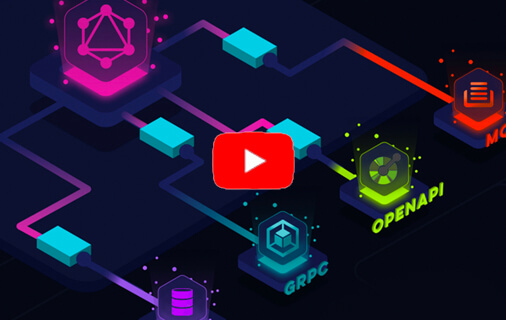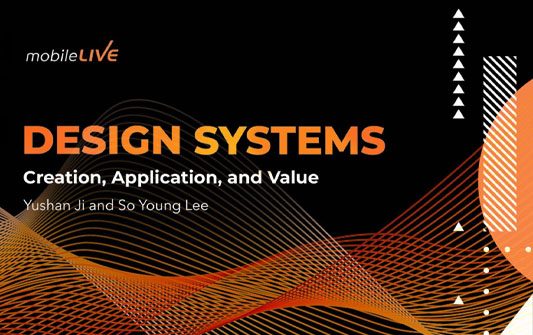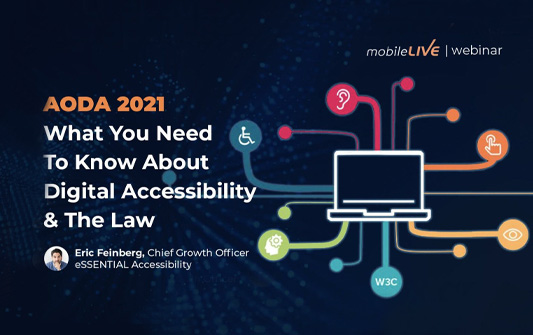Digital Applications
Drive transformational growth with custom digital applications.

In today's fast-evolving market, Digital Applications are essential for modern businesses to enhance operational efficiency, protect data, and improve customer engagement.
We specialize in Digital Applications that are not only efficient but future-ready, integrating advanced service design analytics to anticipate and fulfil each business' dynamic needs. By partnering with us, enterprises gain a competitive edge by streamlining processes, accelerating innovation, and achieving sustainable business growth.
100%
success rate across 200+ digital application projects
15+
industry-first digital solutions introduced
40%
reduction in development time for enterprise clients
Services
Consulting & Experience
- UI/UX Design
- Service Design
- Accessibility Design
- Experience Analytics
- Strategy & Roadmap
Software Engineering
- Custom Development
- Native Mobile App
- Enterprise Application
- Low-Code/No-Code
- Security & Compliance
Quality Engineering
- Device Certification
- Application Testing
- Mobile App Testing
- User Experience Testing
- Managed Testing Services
Tools & Technologies
Accelerators
Enablers for Enhanced Efficiency and Faster Go-to-Market
Friday Design System
Open-source design system that quickly builds customized UI kits, allowing designers to focus on UX and customer-centric experiences.
Product Maturity Toolkit
A set of AI tools enabled with product methodologies and best practices for enhanced product strategy and market fit analysis.
Device Certification E2E Solution
Streamline the entry to lab testing and market launch through E2E OEM pre-certification and device certification processes to meet North American 3GPP standards.
Network Performance Solution
Accelerates RAN, VRAN, and ORAN deployments with PoC testing, troubleshooting, and continuous performance analysis.
On-site Field Trials Solution
Assures 5G readiness with comprehensive testing for drive, site features, performance benchmarking, and stress testing.
Microfrontend Architecture
Component integration from various frontend applications into a singular, independent, deployable, technology-agnostic microfrontend application.
Ready to transform? Let's talk digital applications.
Enhanced user and provider experience through service design and process optimization.
Enhanced customer experience and sales through digital transformation strategies and enterprise app development.
Improved developer experience (DevX) by implementing tools and processes to enhance efficiency and development lifecycle.
Insights

The secret to a company’s success often lies in how a business treats its two most important assets: its customers and its employees.This approach is vital because fostering a positive employee environment translates into exceptional customer service, thereby creating a cycle that drives sustainable growth and profitability.In this episode of ‘Behind the Growth’, I had the honour of interviewing Hussain Qureshi, the President of mobileLIVE, to celebrate his journey and explore his perspectives on the topic.With a career spanning several decades in the tech and telecommunications industries, Hussain has a wealth of knowledge on what it takes to drive a company to success. From his early days as an electronics engineer to leading mobileLIVE as its President, his insights provide a valuable roadmap for any business aiming to prioritize both customer and employee satisfaction.In this blog, you’ll learn Hussain’s strategies for driving business growth while fostering a thriving workplace culture and a satisfied customer base.Identifying and Addressing Customer Needs At the core of any successful business lies a profound understanding of customer needs. Hussain emphasizes that mobileLIVE’s sustained growth is largely attributed to its ability to identify and effectively address these needs. This approach has kept it competitive and fostered strong, enduring relationships with its clients.Engaging Directly to Fine-Tune Solutions At mobileLIVE, the engagement process is designed to ensure that customer interactions are meaningful and productive.Hussain highlights importance of using detailed feedback mechanisms, which help capture essential insights into customer needs and preferences. This process involves regular surveys, customer interviews, and the use of customer service analytics to gauge satisfaction and pinpoint areas for improvement.Moreover, he employs a proactive approach by involving customers early in the development process. This allows for iterative feedback, refining products and services in response to direct customer input before final release.This hands-on engagement strategy ensures that solutions are not only effectively addressing the identified issues but are also evolving with the customer’s changing needs, thereby enhancing overall satisfaction and loyalty.Tailoring Solutions for Enhanced Customer Satisfaction Such a customer-centric approach ensures that every solution provided is tailored to meet specific needs, thus enhancing satisfaction and loyalty. This method of operation doesn’t just solve immediate issues but builds a foundation for long-term success and customer retention by consistently delivering value that customers truly need and appreciate. This proactive stance on customer experience is the cornerstone of a successful business, driving growth through customer satisfaction and loyalty.Fostering Employee Satisfaction and Engagement At mobileLIVE, the emphasis on employee satisfaction is as strong as the focus on customer needs. Hussain believes that a motivated and satisfied workforce is essential to the company’s success. By creating an environment where employees feel valued and part of the company’s mission, you can ensure that your team is productive and deeply engaged with their work.Strategies for Enhancing Employee Engagement mobileLIVE employs several strategies to keep its employees engaged and committed. This includes a robust internal communication strategy that ensures all team members are informed and their voices heard. Regular town halls, feedback sessions, and open forums are part of the company’s culture, fostering a sense of inclusion and transparency.Moreover, Hussain highlights the importance of investing in employees’ professional growth. Through continuous training and development opportunities, employees at all levels should be encouraged to acquire new skills and advance their careers within the company. This focus on personal and professional growth helps maintain high engagement and job satisfaction levels, contributing directly to employee retention and overall company success.Cultivating a Culture of Recognition Recognizing and rewarding employees’ efforts and achievements is another pillar of mobileLIVE’s strategy. Regular celebratory events, performance bonuses, and public acknowledgments contribute to a positive work environment. Such practices boost morale and reinforce the company’s values of hard work and excellence.By prioritizing employee satisfaction and engagement, you can create a motivated workforce that is well-prepared to meet the challenges of the market while driving the company forward.Integrating Employee Goals with Customer Outcomes At mobileLIVE, the alignment of employee goals with customer outcomes is a strategic imperative that drives mutual success. This integration ensures that as employees achieve their professional goals, they concurrently advance the company’s mission to enhance customer satisfaction. It’s a synergistic approach where employee success and customer success are seen as interconnected objectives that fuel the company’s overall growth.Feedback Loops and Communication Key to this integration is the robust feedback loops and open lines of communication between different levels of the organization. By fostering a culture where feedback is both given and received across all hierarchies, mobileLIVE ensures that employee initiatives are in harmony with customer needs. This ongoing dialogue helps in fine-tuning processes and services in real-time, enhancing the ability to meet customer expectations more efficiently and effectively.Empowering Employees to Deliver Excellence Employees at mobileLIVE are empowered to take ownership of projects that directly impact customer experiences. This empowerment is facilitated through access to the necessary tools, authority, and confidence to make decisions that benefit the customer. As a result, employees feel more vested in the outcomes of their work, driving them to excel and innovate in ways that significantly enhance customer satisfaction.Through these strategies, you can foster a positive and proactive workplace and ensures that the company’s objectives of delivering exceptional customer service are met. This alignment of employee and customer goals creates a dynamic where both the company and its clients thrive together.Lessons Learned and Future Directions Capitalizing on Past Experiences Over the years, mobileLIVE has learned valuable lessons that have shaped its strategies and approaches to business. One of the key insights is the importance of staying adaptable and responsive to both market changes and internal feedback. Hussain stresses that this adaptability allows companies to continuously refine their services and internal practices to better meet the evolving needs of customers and the aspirations of their employees.Anticipating the Future Looking ahead, Hussain suggests focusing on leveraging your past experiences to anticipate future challenges and opportunities. mobileLive plans to integrate technology and innovative practices further to streamline operations and enhance the customer and employee experience. This includes adopting more advanced data analytics for deeper customer insights and further automating processes to free up employee time for more strategic tasks.Continued Commitment to Core Values As it moves forward, mobileLIVE remains committed to its core values as they guide the company’s decisions and strategies, ensuring that as they grow, they continue to provide value to their customers while maintaining a supportive and engaging work environment for their employees.Through thoughtful reflection on past lessons and a clear vision for the future, you will be well-positioned to continue your trajectory of growth and success.Takeaway As we’ve delved into mobileLIVE’s successful strategies with Hussain Qureshi, it’s evident that the key to thriving in today’s dynamic market lies in simultaneously enhancing customer experiences and nurturing employee engagement.This exploration offers a guide for businesses to understand the importance of balancing these critical areas effectively. Organizations adopting similar approaches can foster a more engaged workforce and a more satisfied customer base, propelling themselves toward sustained growth and success.If you found these insights valuable, be sure to tune into the full episode of “Behind the Growth” for a conversation you won’t want to miss!Find it here:Prioritizing Customer and Employee Experience
Prioritizing Customer and Employee Experience to Drive Business Growth

DISCOVERY & SOLUTIONING WORKSHOP FOR USER-CENTRIC TRAINING DOCUMENTATION An eGuide OVERVIEW In product development, ignoring the digital customer onboarding process can become one of the biggest reasons that drives your customers away. After all, no matter how great your product is, if your customers don’t know how to use it — or find it difficult to — they’ll quickly move on to the next best option. Despite that, while most companies will claim they spend time to create training documentation and support for the digital customer onboarding process, they often go at it with a waterfall approach that can have significant costs involved, including time lost due to delays that can otherwise be avoided. So, as a digital onboarding solution, we realized that an agile approach is necessary to create user-centric training documentation that is accessible, easy to understand, and best serves the customers’ needs. Training Documentation eGUIDE 1In this eGuide, we‘ve revealed a way to kickstart the process of creating user-centric training documentation alongside product development rather than after it. You’ll learn a 10-step process of how to approach the initial stages of discovery and solutioning in a more structured manner and in a way that aligns all stakeholders on how the training documentation should be created. Training Documentation eGUIDE 2 WHAT’S IN THIS EGUIDE HOW TO USE THIS TRAINING DOCUMENTATION GUIDE This eGuide can be used to organize a three to three-and-a-half hour workshop for the initial stages of Discovery and Solutioning to create Training Documentation. The workshop can be conducted in person or remotely on Miro. To synthesize insights from the workshop, we have also provided a template for an Output Report that you can use to present as a summary report to the audience after the workshop. The template for this report as well as other resources are provided at the end of this eGuide. Training Documentation eGUIDE 3TRAINING DOCUMENTATION WORKSHOP FROM PLANNING TO EXECUTION IN 10 STEPS Step 1: Finding the Right Team Step 2: Preparing for the Workshop Step 3: Orientation and Introductions Step 4: Familiarizing with Miro Step 5: Workshop Questions and Goals Step 6: Identifying Stakeholders and Steps in Training Journey Step 7: Mapping Stakeholder Needs in Training Journey Step 8: Lightning Demos, Presentation and Voting Step 9: Overview, Suggestions and Voting for Documentation Formats Step 10: Conclusion and Discussion Training Documentation eGUIDE 4 STEP 1 FINDING THE RIGHT TEAM Identify key participants for your workshop. You should include people from the Product, Marketing, Support & Success, Operations, and Learning & Development teams (if available). Training Documentation eGUIDE 5STEP 2 PREPARING FOR THE WORKSHOP STEP 2 Learn about the product/application for which you have been tasked to create training documentation. Do a quick industry research and competitor analysis to understand other perspectives. Then, shortlist some training documentation formats that can be used for the product. Schedule the workshop for 3 and a half hours (breaks included) and send invites upfront. Training Documentation eGUIDE 6STEP 3 ORIENTATION AND INTRODUCTIONS Initiate the workshop with a quick intro of the hosts and what the workshop is meant for. Lay down the goal of the workshop and align participants on why everyone is there. Ask a representative from the Product team to quickly describe the vision and strategy of the product to refresh everyone's memory. This will serve as the North Star throughout this exercise. Training Documentation eGUIDE 7STEP 4 Let everyone add some details about themselves on the Miro board, so that they can not only introduce themselves but also get acquainted with Miro in the process. FAMILIARIZING WITH MIRO Training Documentation eGUIDE 8STEP 5 WORKSHOP QUESTIONS AND GOALS In this section, we try to understand the vision of this exercise and identify the risks in achieving that goal. Training Documentation eGUIDE 9STEP 6 IDENTIFYING STAKEHOLDERS AND STEPS IN THE USER JOURNEY Ask the team to list down all the stakeholders (both internal and external) who will be consuming the training documentation. Get the team to map down all the steps in the training user journey, like: ● Before launch, ● At the time of launch, ● Post launch, ● Pre-purchase, etc. Training Documentation eGUIDE 10By this point, your team could probably use a breather, so this is the perfect time for a 10-minute break. You can use this time to map the information (Stakeholders, Training Stages) from the previous section on to the board.STEP 7 MAPPING STAKEHOLDER NEEDS IN TRAINING JOURNEY Ask the team to identify and list down the training needs of all stakeholders at each stage of the training journey. Training Documentation eGUIDE 11STEP 8 LIGHTING DEMOS, PRESENTATION AND VOTING At this stage, ask everyone to browse the Internet and research to find other examples and ideas (at least 3 per person) of Training Documentation. Encourage them to go beyond their immediate industry. Identify "BIG IDEAS" that can inspire. Put a sticky note beside it to sum up the idea. At the end, ask everyone to present their ideas and conduct a voting exercise to shortlist ideas (in the next step). Training Documentation eGUIDE 12Take another breather here before the workshop moves into the final stages of overview, other suggestions, and final voting. A 10-minute pause here will help participants reorganize their thoughts before going into the concluding discussions.STEP 9 OVERVIEW, SUGGESTIONS AND VOTING FOR DOCUMENTATION FORMATS Present some popular and relevant training documentation formats to the team based on your research before the workshop. Present pros and cons for each format. Ask the team for any additional ideas not covered previously and add them to the list. Lastly, vote on the formats. Training Documentation eGUIDE 13STEP 10 CONCLUSION AND DISCUSSION Review the content covered in the workshop and give everyone some time to share anything they would like to add that was not already covered. Thank everyone for their time and conclude the workshop. Training Documentation eGUIDE 14POST-WORKSHOP RECOMMENDATIONS REPORT Use the "Recommendations Report" template (provided on the Miro link at the end of this guide) to summarize and synthesize your workshop insights and to propose recommendations for the Training Documentation formats. Training Documentation eGUIDE 15HELPFUL LINKS This eGuide covers only the Discovery and Solutioning stages of the entire process of creating Training Documentation. Here’s the link to the Miro template you can use when you conduct the workshop: https://miro.com/miroverse/training-documentation/ Discovery and Solutioning are only the initial two steps of our 5-step Process of Creating User-Centric Training Documentation for Effective Digital Onboarding. To learn more on our 5-step process to create user-centric training documentation, please refer to this article: https://www.mobilelive.ca/blog/create-user-centric-trai ning-documentation-for-effective-digital-onboarding Training Documentation eGUIDE 16ABOUT MOBILELIVE We’re your full-service digital team obsessed with helping you make smart investments and reduce time-to-launch. Our team of experts specializes in designing experiences, building products, and scaling technology with flexible engagement models, outside-in views, bespoke solutions, and a succession of early wins while never losing sight of the big picture. 100% client retention since day one 40+ iconic & Fortune 500 clients 20+ industry awards & distinctions http://www.mobilelive.ca contact@mobilelive.ca Training Documentation eGUIDE 17
Discovery and Solutioning Workshop for User-Centric Training Documentation

Holding your customer’s attention when they have no time is a big challenge.Particularly in today’s digital age, with average attention spans that only last a few seconds, driving business outcomes now relies heavily on employing the right user engagement strategy.But before jumping into the various types of user engagement strategies used for improving customer experience and retention, let’s quickly understand exactly what a user engagement strategy entails.What is a User Engagement Strategy?A user engagement strategy is a plan to:Grab your customers’ attention, Improve their experience of using your product, and Make them engage with the product offering on a regular basis. Such engagement tools enable us to not only increase customer loyalty and lifetime values, but also optimize the customer experience and boost customer retention for the long term.User Engagement StrategiesThere are many ways to hold your customers’ attention and engage them long enough to make sure they have a great time using your product.The user engagement strategies highlighted in this article are ideal for growth marketing and product success, and are proven ways to garner customer loyalty and retention:Customer Journey Mapping Hyper-Personalisation Integrating Analytics Rewards and Customer Loyalty Program Chatbot 1. Map Your Customer JourneyTo effectively develop and implement a user engagement strategy, it is crucial to understand who your target audience is and how they use your product.A good way to do this is through customer journey mapping.In this user engagement strategy, you map out your product’s customer journey and understand all the different ways a customer can interact with your digital platform or app. This allows you to unravel any challenges the user may face and discover more about your users’ needs and behavior, which is instrumental in identifying opportunities for engagement.Illustration 1.1: Common touch points surrounding a customer journey map that a visitor takes to start the buyer journey process.Additionally, analyzing your customers’ behavior will allow you to segment your target base and create customer personas. Collecting this knowledge is the first step in creating a tailored user engagement strategy to interact with each persona according to their distinct preferences.2. Create Hyper-Personalized OfferingsIn today’s day and age, providing personalized experiences has become an essential user engagement strategy. And it makes sense why – customers have grown to want products that are tailored to their needs.Personalization can be something as simple as showing customers a location-based ad or using their first name in an email.It could also become something much more complex, by applying nascent technologies such as machine learning and AI to offer hyper-relevant services.A good example of personalisation in the Telecommunication industry is when a customer who regularly purchases data add-ons to meet his monthly needs is offered an exclusive package to upgrade their plan at a discount. Usage behavior, interests, location, device information, etc. could be used to create a unique offer for each customer that best meets their needs.Push notifications are also essential when it comes to a successful user engagement strategy and plan. Using these notifications effectively can help improve awareness and usage for your product features. Location-based notifications or offers can allow you to give the users of your product a contextual experience that would be hard to match.3. Track Business AnalyticsThere is no way of knowing whether your customer engagement strategies are working or not if you don’t have specific success metrics in place and aren’t tracking them on a regular basis.Therefore, it is essential to close the customer loop by listening to their feedback and incorporating it into improving your product offering.Data driven decision-making can allow you to identify behavioral trends and understand how the customers use your product in order to address their needs.Tracking your daily active users (DAU) as a % of your monthly active users (MAU) can give you an estimate on the number of days your customers use your product in each month.Segmentation and analytics play a pivotal role in driving the marketing strategy for an organization. Quantitative insights can help build your brand persona and also help identify the USPs of your product. This can be used to create acquisition and retention campaigns to increase usage.Understanding the onboarding process for your platform and the use of conversion funnels to identify the relevant drop-offs can also play a crucial role in helping uncover design or product level issues that might be hampering your overall user engagement.The use of analytics tools can significantly impact the growth of engagement on your platform. Using these tools can enable you to segment your user audience based on multiple attributes i.e. age, location, interests. These segments can then be targeted with the use of available communication channels or push notifications, thus generating not only interest but also customer retention and loyalty to your offering.4. Design a Customer Loyalty ProgramAnother effective user engagement strategy is to engage your customer through a customer loyalty program that rewards them with points, discounts and gifts in return for frequently engaging with your platform.These programs can prove to be very effective as they not only improve customer retention, but also increase customer switching costs by boosting customer loyalty. Having a loyal customer base can generate word of mouth and referrals for your product, which can attract the desired audience to your platform.Illustration 1.2: Customer loyalty programs improve customer engagement and boost retention rates.5. Implement a ChatbotChatbots are a proven tool to increase conversion rates, especially when it comes to digital platforms.An AI-powered chatbot has the ability to analyze data and appropriately reply to users based on preprogrammed recommendations. The program can also be engineered to trigger specific messages based on customer attributes such as location, time, or engagement levels.Bots can also help users choose products they like, answer FAQs, or even act as a trouble-shooter to decrease churn rates.Additionally, another key advantage of using chatbots as part of your user engagement strategy is their ability to offer minimum service levels even during after-hours when a call center representative is not available. This helps create an additional channel through which key customer information can be collected so that they can be contacted later.TakeawayThere’s no doubt that the digital age of today has transformed the way businesses operate and seek out customers.Therefore, in efforts to keep up with such transformation, it is now more crucial than ever to adopt smart approaches and strategies that put the customer at the center of your engagements with them.User engagement strategies like the ones discussed above all help you hold your ideal customers’ attention, improve their experience using your product, and keep them coming back for more.Remember, the right user engagement strategy will pave the way for transforming your target audience into loyal customers that stick with you for the long haul.FAQsHow to optimize user engagement?There are many user engagement strategies that help optimize user engagement for your product, digital platform, or app. Some great ways to do this include customer journey mapping, hyper-personalization, integrating analytics, customer loyalty programs, rewards, and chatbots.How do you increase product engagement?Product engagement can be increased by incentivising customers (e.g. through loyalty programs and rewards), using and studying user data to create personalized notifications and offers, and streamlining and optimizing the overall user experience through customer journey mapping.
Improving Customer Experience with the Right User Engagement Strategy

Client demands are always changing, and if the last decade is any metric to go by, we know they will continue to evolve for the foreseeable future. To stay competitive now requires companies to have multiple permutations of their offering and an agile approach to continuous improvement. The traditional REST API model doesn’t cut it anymore; what companies need is fast pace in development, and with GraphQL that’s exactly what they get. Join Luca Maraschi, CTO mobileLIVE, as he very elaborately walks us through the journey of what GraphQL does, why it is important, and how it differs from REST.
GraphQL and the API Economy: Beyond the Traditional REST API Model

Most major brands and product companies have already adopted Design Systems and for a good reason. Good design results from good design practices and few bring as much efficiency, consistency, and organizational value as a well-implemented and utilized Design System. This session was created to give a candid view of Design Systems in action, with a particular focus on small to mid-sized and legacy organizations. Addressing everything from design and developer collaboration to garnering stakeholder buy-in, and spanning the theoretical to the practical, you’ll discover not only the “Who, What, Why, and How” of Design Systems, but also our own unique and straightforward framework for successfully creating one. In this webinar, we answer: What is a Design System, and why you’d want one? How do you successfully build them, and who should be involved? What are their key components? How do you use and maintain one? Open Source vs Design System? And more!
Design Systems: Creation, Application, and Value

The Accessibility for Ontarians with Disabilities Act (AODA) means that all public and private sector organizations with 50+ employees must make web content accessible to WCAG 2.0 AA standards. Failure to comply can result in fines of up to $100,000/day. But what does it mean or take to be AODA compliant? See for yourself in this webinar as we take you through: An overview of AODA regulations and requirements Give advice on accessibility testing techniques to ensure your website meets WCAG standards and is AODA compliant Tell you how you can make the business case for accessibility at your organization
AODA Regulations in 2021: Digital Accessibility and Compliance

Designing for Accessibility: Our Framework and Best Practices

Low-code/No-code (LC/NC) software development is much more than a buzzword; it is something that challenges the definition of what software development is.Intrigued? You should be. And today, we are going to do a crash course covering what low-code/no-code is, where it came from, its value, and why it is getting the attention of some of the biggest players in the game.The Difference Between Low-Code & No-Code Low-code software is essentially software that can be configured and customized with minimal (or “low”) programming efforts. To be clear, it still requires someone with programming knowledge to execute. The result is an ability to develop custom applications in hours or days, not weeks and months, and at a significant cost reduction.On the other hand, no-code takes it one step further and empowers anyone with the ability to create and customize an application, all without any prior experience. While the two are usually clubbed together and referred to as low-code/no-code, it is the latter that is really exciting, in my opinion.Now that we know what they are, it’s time to see where they came from.A Brief History of Low-Code/No-Code You may be surprised to know that early forms of LC/NC tools have been around since the ’80s and ’90s. Rapid Application Development (RADs), Computer Assisted Software Engineering (CASE) tools, and efforts like IBM’s Informix all share lineage with today’s LC/NC, but at the time, they simply couldn’t deliver on their promises.The second wave of tools began appearing in the 2000s, with some even classifying as low, if not, no-code. Jump forward to 2016, and LC/NC is back and trending according to google, as they continue to do today.Why Low-Code/No-Code? Low-Code/No-Code DevelopmentThe enterprise tech stack is getting more and more complex with each passing day. In an ideal world, all applications would easily integrate and come with a perfect shiny frontend. Sadly, anyone living in reality knows this not to be the case. In the real world, IT and engineering teams spend a lot of time fighting fires because of security and internal product bugs. These teams are usually already overburdened and spend 30% of their resources building and maintaining internal tools, further reducing productivity and increasing technical debt.According to Salesforce, seventy-two percent of IT leaders now say project backlogs prevent them from working on strategic projects. This problem is not one that can be solved by hiring either, because as most know, the demand for technical talent far exceeds the supply. This is further compounded by the aforementioned firefighting, as business teams keep adding third-party tools to increase their agility.Standard software development processes are dependent on highly-skilled, costly, and time-intensive technical resources. The communication between the business team and technical teams is often fragmented, resulting in longer user acceptance cycles, increased costs, and time-to-market. And after all that time, effort, and money, your software might still end up with bugs. Low-code/no-code tools can solve all these problems.Low-Code/No-Code App Development Platforms LC/NC application development platforms can vary from tool to tool, but for the most part, you will typically find these components common amongst them:Interface Designer: An interface designer is used to design the app’s entry forms or screens. The interface designer typically adds fields, text, and other layout elements to app screens or forms. Workflow Designer: A workflow designer is used to implement business logic and workflow. For example, if building a submission form, the workflow designer would be used to define where the form should go after submission. Common Database: An integrated database contains the data tables that store the data to be created, retrieved, and updated through the app. Connectors: Connectors (sometimes referred to as spokes, webhooks, or interfaces) allow you to connect your app to other third-party apps or services easily. Connectors allow you to automate workflows and tasks across many apps and services from within the context of your app by exposing app data or services, or by retrieving, consuming, or updating data from other apps and invoking their services. Low Code / No Code Platforms Landscape of Low-code/No-code platforms available in the market Growing & Getting Noticed LC/NC is rapidly growing in popularity, partially thanks to websites such as nocodedev.com and nocode.tech which provide a variety of platforms for creating LC/NC mobile and web applications. It’s also garnered the attention of some big names who are opting to join in rather than sitting on the sidelines.Google announced in Jan 2020 that it is buying AppSheet, an eight-year-old no-code mobile-application-building platform. The company had raised more than $17 million on a $60 million valuation, according to PitchBook data.In late June 2020, Amazon announced its launching the beta version of Honeycode, an LC/NC app building platform. The entry of such large names in the space proves there is room, a need, and desire for an LC/NC platform, and this trend could just shape the future of development.The Future of Low-Code/No-Code The current ongoing pandemic has forced enterprises in every industry, public and private, to re-assess and reconsider low-code/no-code platforms, adopting them at a rapid pace. Since these organizations are looking to spend less and build-out services faster, these platforms have become the obvious answer.Gartner forecasts that low-code application platforms will account for 65 percent of all app development by 2024. This means most apps created in 2024 will be developed using platforms and tools that provide turnkey ways to program. Apps potentially developed by men and women who can’t write a single line of code.The low-code market will top $21 billion in spending by 2022 says,Forrester. That’s a huge number and opportunity. Investors would be wise to support the existing players who can shift rapidly to this newmodel, even when it means giving up short-term services revenue for longer-term competitive advantage. Startups that help build out the industry’s new low and no-code application platforms will also rise, like the design app Canva, valued at $3.2 billion.Take away With the rise of APIs, improved connectivity, growing cloud popularity, and software purchasing and deployment becoming easier, no-code/low-code development platforms have the potential to accelerate enterprise innovation by reducing the need for technical skills and resources. And while LC/NC is already causing a lot of excitement, I think we are still a little while off before we start to see the significant and successful rise of Citizen Developers, but it might not be as long as you think.


